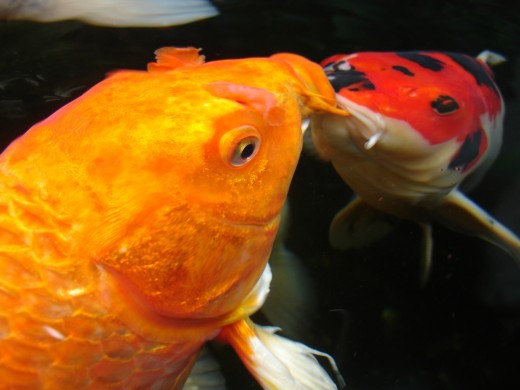Aquarium Stocking Levels: How Many Fish Per Tank and Rates to Add Them
An overstocked aquarium is extremely unhealthy and often fatal for fish
Additional Resources for Fish Care and Troubleshooting


For a healthy aquarium, the stocking level is absolutely critical. Some sources will simply cite how many fish you can have in a tank, but there are many other factors to consider than mere numbers.
Stocking Rule of Thumb for Smaller Fish
Beginning aquarists are often familiar with the rule of thumb that states you should have 1” of fish per gallon, but bear in mind that this does not indicate 1” per gallon of the overall capacity of the tank. Most likely, your tank has decorations, substrate and equipment also crowding in, so it’s important to know how many gallons of actual water are in the aquarium to determine how many inches of fish.
Next, the rule of thumb does not apply to all fish, and certainly doesn’t apply to the size the fish typically are when you purchase them from a pet store. It’s a good rule for freshwater community fish that will reach 6” or less in adulthood. Varying food consumption needs, aggression levels and size will change the rules.
Capacity Requirements for Large Fish
Larger herbivores and omnivores with an adult size greater than six inches will require about two gallons of water per inch of their size. In addition, it’s also important to ensure the aquarium is at least twice as wide as the fish is long, and four times as long as the fish’s length. This ensures adequate free swim space and keeps the fish from feeling crowded when it turns. Avoid very tall or bulky decorations that may make basic movement difficult for these larger fish.
Carnivores over 6” – such as Oscars – or fish with higher-than-average waste output such as goldfish have their own stocking rule. Nearly all of these types of fish are territorial, as well as produce about twice the amount of waste as their similarly-sized herbivorous counterparts. Because of the increased volume of waste, you’ll either need to do partial water changes more frequently or add more filtration. Standard tropical filtration starts at a water turnover rate of four times every hour (i.e. filtering 40 gallons per hour in a 10-gallon tank). These larger fish require no less than a 10-time water turnover rate, or 100 gallons per hour in a 10-gallon tank.
Rates for Adding New Fish
Especially in a newly-cycled tank, it is imperative that you take great care in adding new fish to the tank slowly. Even a well-established tank could experience an ammonia spike if you add too many fish at once, failing to give the colony of beneficial bacteria enough time to grow to meet the new ammonia demands. In general, don’t add more than 20% of the tank’s overall capacity at once, then wait about 7-14 days before adding another 20%. In cases where this is not possible – for instance, if the overall capacity is only two of the type of fish you’re adding and they’re already adults – then you will have to test your water parameters every 1-2 days and do a partial water change if ammonia or nitrite levels appear.
Additional Notes
Bear in mind that these are very general rules to help get you started. Every type of fish may potentially have different requirements for different reasons, so it’s extremely important to do your own research on any species of fish you’re considering adding to your tank. Always remember that the vast majority of fish sold in pet stores are juveniles, so you can expect much larger adult sizes for most of them.
Never trust that the person working behind the counter at the pet store will be able to give you reliable information about the fish’s needs – unfortunately, while there are exceptions to the rule, many pet store attendants are hired regardless of any level of knowledge they may or may not have about the animals and fish they sell. All this means is that you must take on the responsibility of researching the fish yourself, and make sure you know that you’re properly matching the fish you want with their needs.
Hopefully this article has been helpful to you. Now, I would greatly appreciate your help in developing the library of information I can offer for your fishkeeping needs. Please take a moment and post a comment below answering the question, what is your single biggest frustration when it comes to matching up the right aquarium with the right fish? Thank you so much for your time, and please feel free to post any additional questions you might have.
Great tips for adding fish to your aquarium
- How to Set Up a Freshwater Aquarium
You're finally getting started in the fishkeeping hobby and want to learn all the fundamentals. You are taking the first step to responsible fishkeeping, researching the needs of your new pets before you... - Essential Equipment for a Freshwater Aquarium
There is a plethora of available equipment on the market for every imaginable kind of setup...so what do you actually need? By now you've selected your aquarium and should have a pretty good idea of... - Python No Spill Clean and Fill -- A Product Review (...
I can't count how many times I have had customers come up to me and say they'd love to have an aquarium, but just don't have time for all the work the goes into them. I always smile and then tell them...



